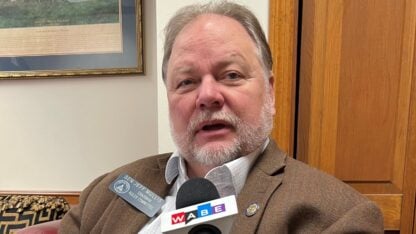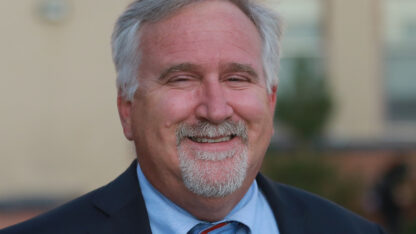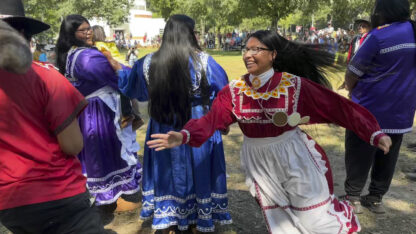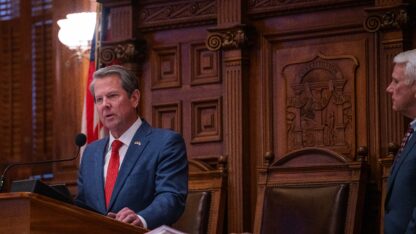Carroll County Students Learn Career Skills Their Region Needs
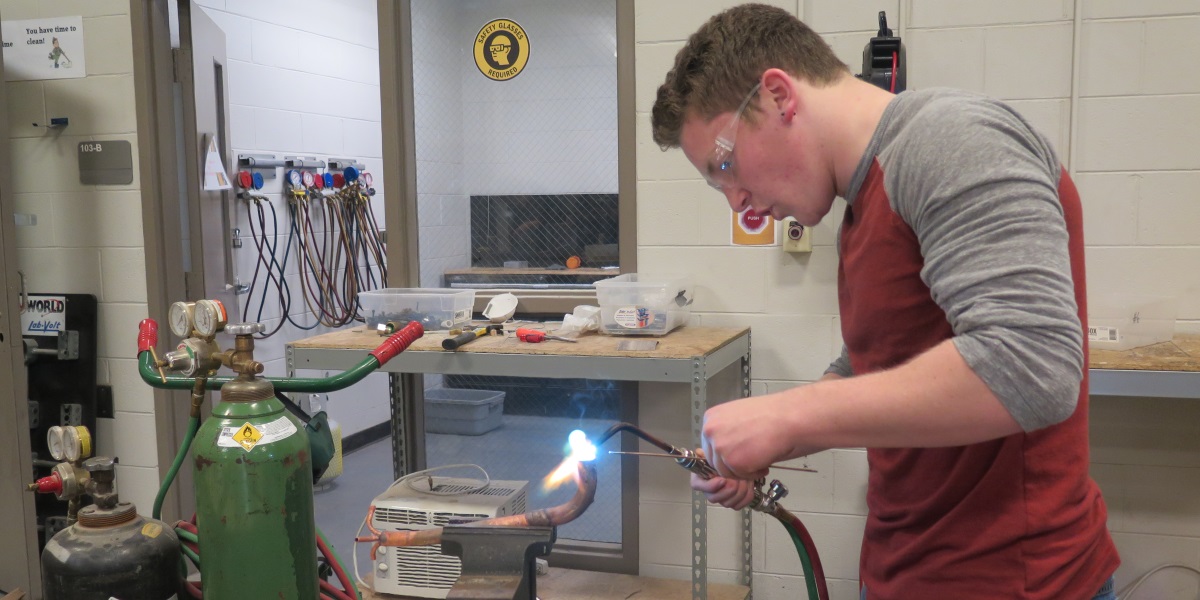
molly samuel / WABE
This story is part of WABE and American Graduate’s Advancing Atlanta: Education series. For more stories, click here.
Every day more than 1,200 students go from their regular high schools to the Carroll County College and Career Academy to learn fields as varied as health care, culinary arts, video production, IT and auto mechanics. The hallways feel like a typical high school’s, but behind one door, there’s an auto shop, behind another, an HVAC lab.
Jordan Decker, who’s in 11th grade, is studying heating, ventilation and air conditioning.
“I plan on getting a job doing this out of high school,” he said. “And then eventually going to college and working for either a big company or making it bigger myself.”
This is a new kind of vocational training, said Decker’s HVAC teacher Steve McCray.
“It used to be kind of a, I guess a dumping ground for troubled kids,” McCray said. “Now it’s for kids who want to go out there and want to get a job.”
The school is intentional about the programs it offers.
“We work very closely with our business community to get an idea of what our region needs,” said Cindy Clanton, the director of career, technical and agriculture education for Carroll County. “We want kids in high-demand, high-pay, high-skill jobs. And I want our talent to stay here in the West Georgia region.”
The Skills Gap
Several years ago, Bob Schwartz, who’s on the faculty at the Harvard Graduate School of Education, and a couple of his colleagues did a study on how prepared young people in America were to join the workforce. He found that though high schools were encouraging students to pursue a college degree, many students weren’t making it that far. Meanwhile, employers were saying they couldn’t find skilled workers.
“We’ve got a skills shortage here,” Schwartz said. “We’ve got good jobs that are really going begging because we don’t have the kind of alignment between our education system and our workforce system that we really need here.”
Schwartz now heads the Pathways to Prosperity Network, which helps states address the skills gap. The idea is for school districts to respond to their local economies: Figure out where the jobs are and what they require. Georgia is one of the states participating in the network.
“It’s about channeling people to the right career, whatever that be,” said Dwayne Hobbs, who manages the career, technical and agriculture curriculum for the Georgia Department of Education, “whether that’s straight to work, or whether that’s going to a Ph.D.”
Or it could be somewhere in between, like getting an industry certification or a technical degree. That’s what 17-year-old Ivie Newton wants to do. She studies auto mechanics at the Carroll County College and Career Academy, and wants to go from there to the technical college next door.
“I used to be like, really girly, and I kind of grew into myself,” said Newton, standing in the shop room. She said working with cars is like putting together a big puzzle, and it’s more fun for her than her regular high school classes.
Newton’s classmate Justin Bickford said he’s always liked cars, and if he wasn’t doing this, he’d probably be trying to do something else mechanical.
“I don’t really understand math that well or science, but one thing I can do is work on cars,” Bickford said.
Later, Principal Cindy Clanton called him out on that. Justin thinks he doesn’t like math and science?
“Yeah he does,” she laughed. “And he can perform math and science at a very high level, but it’s connected to automotive technology. And so it’s an applied learning that he didn’t have before.”
And it could get him a good job. Teacher Steve McCray said he’s seen his students succeed.
“It’s nice when they stop back by and they tell you, ‘Mr. McCray, look at my new truck. I’m buying my house,’” he said.
The program has been so popular, Clanton says Carroll County is building a second school like it, which will make it the first county in the state with two college and career academies.
This story is part of American Graduate, Let’s Make It Happen, a public media initiative made possible by the Corporation for Public Broadcasting.
9(MDAxODM0MDY4MDEyMTY4NDA3MzI3YjkzMw004))
